Arctic sea ice, Greenland and Europe’s weird weather
As I write this, I am sitting in a short-sleeved shirt with the window open, enjoying an unusually warm start to the month of May. It’s around 27 degrees Celsius in this part of Germany, pleasant, but somewhat unusual at this time. The first four months of this year have been the hottest of any year on record, according to satellite data.
The Arctic is not the first place people tend to think of when it comes to explaining weather that is warmer – as opposed to colder – than usual in other parts of the globe. But several recent studies have increased the evidence that what is happening in the far North is playing a key role in creating unusual weather patterns further south – and that includes heat, at times.
Why sea ice matters
The Arctic has been known for a long time to be warming at least twice as fast as the earth as a whole. As discussed here on the Ice Blog, the past winter was a record one for the Arctic, including its sea ice. The winter sea ice cover reached a record low. Some scientists say the prerequisites are in place for 2016 to see the lowest sea ice extent ever.
Several recent studies have increased the evidence that these variations in the Arctic sea ice cover are strongly linked to the accelerating loss of Greenland’s land ice, and to extreme weather in North America an Europe.
“Has Arctic Sea Ice Loss Contributed to Increased Surface Melting of the Greenland Ice Sheet”, by Liu, Francis et.al, published in the journal of the American Meteorological Society, comes to the conclusion: “Reduced summer sea ice favors stronger and more frequent occurrences of blocking-high pressure events over Greenland.” The thesis is that the lack of summer sea ice (and resulting warming of the ocean, as the white cover which insulates it and reflects heat back into space disappears and is replaced by a darker surface that absorbs more heat) increases occurrences of high pressure systems which get “ stuck and act like a brick wall, “blocking” the weather from changing”, as Joe Romm puts it in an article on “Climate Progress”.
Everything is connected
The study abstract says the researchers found “a positive feedback between the variability in the extent of summer Arctic sea ice and melt area of the summer Greenland ice sheet, which affects the Greenland ice sheet mass balance”. As Romm sums it up:“that’s why we have been seeing both more blocking events over Greenland and faster ice melt.”
He quotes co-author Jennifer Francis of Rutgers University, New Jersey, explaining how these “blocks” can lead to additional surface melt on the Greenland ice sheet, as well as “persistent weather patterns both upstream (North America) and downstream (Europe) of the block.
“Persistent weather can result in extreme events, such as prolonged heat waves, flooding, and droughts, all of which have repeatedly reared their heads more frequently in recent years”, Romm concludes.
“Greenland melt linked to weird weather in Europe and USA” is the headline of an article by Catherine Jex in Science Nordic. People are usually interested in changes in the Greenland ice sheet because of its importance for global sea level, which could rise by around seven metres if it were to melt completely. But Jex also draws attention to the significance of changes to the Greenland ice for the Earth’s climate system as a whole.
The jet stream
“Some scientists think that we are already witnessing the effects of a warmer Arctic by way of changes to the polar jet stream. While an ice-free Arctic Ocean could have big impacts to weather throughout the US and Europe by the end of this century”.
She also notes some scientists warning of “superstorms”, if melt water from Greenland were eventually to shut down ocean circulation in the North Atlantic.
The site contains an interactive map to indicate how changes in Greenland and the Arctic could be driving changes in global climate and environment.
The jet streams drive weather systems in a west-east direction in the northern hemisphere. They are influenced by the difference in temperature between cold Arctic air and warmer mid-latitudes. With the Arctic warming faster than the rest of the planet, this temperature contrast is shrinking, and scientists say the jet streams are weakening.
Jex quotes meteorologist Michael Tjernström, from Stockholm University, Sweden: “Climatology of the last five years shows that the jet has weakened,” says. Its effect on weather around the world is a hot topic.
“We’ve had strange weather for a couple of years. But it’s difficult to say exactly why.”
One explanation, Jex writes, is that a weak jet stream meanders in great loops, which can bring extremes in either cold dry polar air or warmer wetter air from the south, depending on which side of the loop you find yourself. If the jet stream gets “stuck” in this kind of configuration, these extreme conditions can persist for days or even weeks.
Experts have attributed extreme events like the record cold on the east coast of the USA in early 2015, a record warm winter later the same year, and the summer heat waves and mild wet winters with exceptional flooding in the UK to these kind of “kinks” in the jet stream.
Greenland and the ocean
The changes to Greenland’s vast land ice sheet also have consequences for ocean circulation, because they mean an influx of the cold fresh water flowing into the salty sea. And the sea off the east coast of Greenland plays a key role in the movement of water, transporting heat to different parts of the world’s oceans and influencing atmospheric circulation and weather systems.
There have often been “catastrophe scenarios” suggesting the Gulf Steam, which brings warm water and weather from the tropics to the USA and Europe could ultimately be halted, leading to a new ice age. (Remember the “Day after Tomorrow?)
Although this extreme scenario is currently considered unlikely, research does suggest that the major influx of fresh water from melting ice in Greenland and other parts of the Arctic could slow the circulation and result in cooler temperatures in north western Europe.
Jex goes into the theory of a “cold blob” of ocean just south of Greenland, where melt water from the ice sheet accumulates. Some scientists say this indicates that ocean circulation is already slowing down. The “blob” appeared in global temperature maps in 2014. While the rest of the world saw record breaking warm temperatures, this patch of ocean remained unusually cold.
According to a recent study led by James Hansen, from Columbia University, USA, the ‘cold blob’ could become a permanent feature of the North Atlantic by the middle of this century. Hansen and his colleagues claim that a persistent ‘cold blob’ and a full shut down of North Atlantic Ocean circulation could lead to so-called ‘superstorms’ throughout the Atlantic. And there is geological evidence that this has happened before, they say. But the paper was controversial and many climate scientists questioned the strength of the evidence.
However, some scientists already attribute western Europe’s warm and wet winter of 2015 to the “cold blob”, Jex notes, which may have altered the strength and direction of storms via the jet stream.
The good old British weather
The UK’s Independent goes into a new study by researchers at Sheffield University, which indicates soaring temperatures in Greenland are causing storms and floods in Britain. The Independent’s author Ian Johnston says the study “provides further evidence climate change is already happening”.
It never ceases to amaze me that evidence is still being sought for that, but, clearly, there are still those who are yet to be convinced our human behavior is changing the world’s climate. So every bit of scientific evidence helps – especially if it relates to that all-time favourite topic of the weather.
The study also looks at the static areas of high pressure blocking the jet stream. With amazing temperature rises of up to ten degrees Celsius during winter on the west coast of Greenland in just two decades, it is not hard to imagine how this can effect the jet stream, and so our weather in the northern hemisphere.” If forced to go south, the jet stream picks up warm and wet air – and Britain can expect heavy rain and flooding. If forced north, the UK is likely to be hit by cold air from the Arctic”, Johnston writes.
The article quotes Professor Edward Hanna from the University of Sheffield, lead author of a paper about the research published in the International Journal of Climatology, and says seven of the strongest 11 blocking effects in the last 165 years had taken place since 2007, resulting in unusually wet weather in the UK in the summers of 2007 and 2012.
Hanna told the Independent computer models used 10 to 15 years ago to predict the extent of sea ice in the Arctic had significantly underestimated how quickly the region would warm.
“It’s very interesting to look at the observed changes in the Arctic … the actual observations are showing far more dramatic changes than the computer models,” Professor Hanna said.
“You do get sudden starts and jumps. It’s the sudden changes that can take us by surprise and there certainly does seem to have been an increase in extreme weather in certain places.”
Drawing conclusions (or not?)
In the Washington Post, (reprinted on Alaska Dispatch News) Chelsea Harvey sums up the conclusions of the latest research in an article entitled “Dominoes fall: Vanishing Arctic ice shifts jet stream, which melts Greenland glaciers”:
“There are a more complex set of variables affecting the ice sheet than experts had imagined. A recent set of scientific papers have proposed a critical connection between sharp declines in Arctic sea ice and changes in the atmosphere, which they say are not only affecting ice melt in Greenland, but also weather patterns all over the North Atlantic”.
So what do we learn from all of this? Sometimes I ask myself how many times we have to hear a message before we really take it in and decide to do something about it.
Here in Bonn, not far from the office where I am sitting now, the first round of UN climate talks since the Paris Agreement at the end of last year will be kicking off this coming weekend. The aim is to stop the rise in global temperature from going about two, preferably 1.5 degrees C. We have already passed the one degree mark. In an interview with the Guardian this week, the head of the IPCC Hoesung Lee says it is still possible to keep below two degrees, although the costs could be “phenomenal”. But many scientists and other experts are increasingly dubious about whether emissions can really peak in time to achieve the goal. Current commitments by countries to emissions reductions still leave us on the track for three degrees at least.
The concentration of greenhouse gases in the atmosphere is, as the Guardian puts it, “teetering on the brink of no return”, which the landmark 400 ppm measured for the first time at the Australian station at Cape Grim and unlikely to go below the mark again at the Mauna Loa station in Hawaii.
On my desk, I have a book entitled “Arctic Tipping Points”, by Carlos M. Duarte and Paul Wassmann. It was published in 2011. Before that, Professor Duarte had explained the global significance of what is happening in the Arctic to me
at an Arctic Frontiers conference in Tromso, Norway. How much more evidence do we need? Science takes a long time to research, evaluate and publish solid evidence of change and its consequences, with complex review processes. If politicians delay much longer, the pace of climate change will be so fast that action to avert the worst cannot keep up. Meanwhile, that Arctic ice keeps dwindling – and I sense another major storm on the approach.
Rising seas culprit: ice or heat?
My attention was caught this week by a study that ascertained that thermal expansion accounts for a much greater share of sea level rise than previously thought. In fact, quite a few journalists got the message wrong. They thought the researchers had found that climate change was causing sea level rise twice as high as previously thought, which would have been quite a sensation. In fact, what the scientists actually found was that the amount of sea level rise that comes from the oceans warming and expanding has been underestimated and is probably about twice as much as previously calculated. There is a clear difference, which does not make the research – using the latest available satellite data – any less interesting.
Since two of the authors of the study are based here in Bonn, I was able to drop in on them and get them to explain their findings and the implications for our Living Planet programme. That will be broadcast in the near future. I also talked to Professor Anders Levermann from the Potsdam Institute for Climate Impact research on the phone, to get the research findings into context.
While physicists understand the workings of thermal expansion in the oceans in general, Levermann told me there is still a lot to learn about how the heat from excess warming is transported in the ocean, which is of key importance to understanding sea level rise, amongst other things. He says the new research will help make models of future sea level rise more accurate.
The Bonn researchers explained to me how satellite technology has made huge improvements in the collection of data, especially relating to the very deep areas of the ocean, which are very difficult to reach with conventional measuring gauges. Professor Kusche told me he would like to see the results of the study, published in the Proceedings of the National Academy of Sciences, being used by governments and coastal planners, as sea level rise will affect a large number of people living in coastal areas in the not-too-distant future. Warming seas are also linked to the occurence of storms, making the findings doubly relevant to those involved in protecting coastal areas.
From an Iceblogger point of view, I was keen to know whether the knowledge about the amount of sea level rise ascribed to thermal expansion had any implications for the role played by melting ice in raising sea level. If thermal expansion is accounting for a higher share of the sea level rise, is melting ice from Greenland and Antarctica accounting for less? I put that question first to Professor Kusche.
“We think that less of the sea level rise is coming from melting ice and glaciers, that’s actually true,” he answered. He said he and his colleagues had done a very thorough re-analysis of all the measurements available over the last 12 or 13 years, “and we are pretty sure that our numbers are correct”.
Rietbroek came in that that point: “Less, but not that much less. If you look at pubished literature and estimates of glacier melting, and try to add those up, you won’t be that far away from what we get. So the melting of glaciers is not that different from what’s been found previously”, he added.
I put the same question to Professor Levermann from PIK, who runs an ice sheet model for the Antarctic and was lead author of the IPCC chapter on sea level change. He explained to me that the various contributions to sea level rise are measured and modelled separately by different teams of experts in particular fields. The models all have a wide range of possible variation. He told me there is still some uncertainty in the distribution of the “sea level rise budget” between thermal expansion, ice sheet melt, mountain glacier melt and groundwater mining. While the latest findings on thermal expansion could potentially shift the relative contributions and are important for improving models to project future sea level rise more accurately, they do not change the validity of predictions relating to the amount of ice going into the ocean.
Ultimately, Levermann says, one of the IPCC statements with the highest certainty is that sea level will continue to rise for centuries to come. He was one of the authors of yet another study published in Nature Climate Change this past week, led by Peter Clark from the Oregon State University. It affirms that our greenhouse gas emissions today produce climate change commitments for many centuries to millenia. Unless the Paris climate agreement is put into practice asap and we reach zero or negative emissions, up to 20 percent of the world’s population will find itself living in areas that may have to be abandoned.
We are, indeed, living in the Anthropocene. Recently, I interviewed a scientist who found that we have already postponed the next ice age by 50,000 years through our fossil fuel emissions. The latest sea level study indicates that the next few decades offer a brief window of opportunity to avoid increased ice loss from Antarctica and “large-scale and potentially catastrophic climate change that will extend longer than the entire history of human civilization thus far”.
Can Paris avert climate threat to cryosphere?
To those of us who work on polar subjects, there is no question about the relevance of the cryosphere to the annual UN climate negotiations. But in the run-up to the annual mega-event – especially in a year dubbed by some to be the “last chance” for climate – it was not easy to get attention for the Arctic, Antarctic and high-altitude peaks and glaciers of the world.
I had a discussion with some of my colleagues who focus on Africa and Asia. With problems like political unrest, wars, famine and drought to cope with, the fate of polar bears, one told me, is completely irrelevant.
You could say this colleague is suffering from a kind of tunnel vision. But it also prompts me to wonder whether the way we communicate the threat of climate change is partly to blame.
Not just polar bears
Earlier this week I read about a study indicating that people were more likely to donate to campaigns which focus on people, on social injustice rather than on conservation and environmental degradation. Somehow, we journalists have to make the connection between the two. When you remind people that increasing sea levels caused to a large extent by changes in our ice sheets pose a huge threat not only to small island states but to many of the world’s megacities, the cryosphere takes on a new relevance. Not to mention the fact that the ice, snow and permafrost covered regions of our planet play a major role in regulating the world’s climate and water supplies.
One organization that works to bring the attention of delegates at the UN climate talks to our icy regions is the International Cryosphere Climate Initiative, ICCI. In time for this year’s COP21, it commissioned a report from leading scientists: “Thresholds and closing windows. Risks of irreversible cryosphere climate change”. The report summarizes the levels of risk in five key areas: ice sheets loss and related sea-level rise, polar ocean acidification, land glacier loss, permafrost melt, and the loss of Arctic summer sea ice. The report is based on the last IPCC assessment plus literature published in the three years since.
Bringing the ice closer
Pam Pearson is the director and founder of ICCI. I have interviewed her on various occasions, including during visits she made to Bonn, the home of the UNFCCC, to brief delegates. This time we were not able to meet in person, but we have been in Email contact. I asked her how difficult it was to arouse interest within the negotiations at the moment, with so much going on. She told me it was difficult mainly because very few people globally actually live near cryosphere.
“Yet we are all deeply connected to these regions, because of their role in the Earth climate system — especially through sea-level rise, water resources from land glaciers, and permafrost release that will make it harder to meet carbon budgets. “
The Arctic, parts of Antarctica and many mountain regions have already warmed two to three times faster than the rest of the planet, between 2 and 3.5 degrees Celsius up on pre-industrial levels. Climate change is also affecting high altitude areas such as the Himalayas and the Andes, where seasonal glacier melt provides water for drinking and irrigation, especially in dry periods.
When the outside risk becomes the norm
The changes are far more extreme than those forecast in even the most pessimistic scenarios of a few years ago. In the IPCC’s 2007 Fourth Assessment, the outer extreme estimate for sea level rise (mostly from glacier ice melt) was about one meter by the end of this century. Today, the experts say even if we could halt warming now, it would be impossible to avoid sea-level rise of one meter from glaciers, ice sheets and the natural expansion of warming waters, within the next two hundred years. Most scientists also agree that the West Antarctic ice sheet has already been destabilized by warming to the extent where this probably cannot be halted, which will increase sea level further.
Pearson used to be a climate negotiator herself, so she knows the pressures and constraints. She told me that while participants in the climate conferences were broadly aware of issues like ice melt at the poles and on high-altitude glaciers, they tended to lack awareness of two key aspects:
“First, that we have already passed, or are close to passing temperature levels that will cause certain processes to begin; and second, that some of these processes cannot be stopped once they get started.”
She says a “sense of urgency” is lacking, and stresses that although some of the most damaging consequences will only occur in hundreds or even thousands of years, they will be determined by our actions or inactions in the coming few decades. That includes the 2020-30 commitment period that is the focus of the agreement being worked on in Paris Pearson stresses.
The cryosphere needs more ambitious targets
The report analyses the implications of the INDCs, or current pledges put on the table by the countries of the world for the Paris climate talks. The scientists come to the conclusion that these will not be enough to prevent the onset of many irreversible cryosphere processes.
Even the two-degree pathway agreed by the international community translates into a peak cryosphere temperature of between 4 and 7 degrees above pre-industrial levels, according to the ice experts. Yet the UN and others say current commitments would lead to global temperatures 2.7 to 3.5 degrees Celsius above pre-industrial levels by 2100, rising later to between 3.4 and 4.2 degrees. The peak in global carbon emissions would occur well after 2050. The associated temperatures would trigger permanent changes in our ice and snow that cannot be reversed, including the complete loss of most mountain glaciers, the complete loss of portions of West Antarctica’s Ice Sheets and parts of Greenland. This would ultimately equate to an unstoppable sea level rise of a minimum four to ten meters, the scientists find.
In addition, the increase of CO2 being absorbed in the Southern Ocean around Antarctica and the Arctic Ocean is turning the water more acidic and so threatening fisheries, marine ecosystems and species.
Another of the key issues which is often neglected is that of permafrost. About a quarter of the Northern Hemisphere’s land area contains ground that remains frozen throughout the year. This holds vast amounts of ancient organic carbon. So when it thaws, carbon dioxide and methane are released, which fuel further warming. Even a temperature rise of 1.5 degrees could result in a 30% loss of near-surface permafrost. This would mean 50 Gigatonnes of additional carbon emissions by 2100. Given that the total carbon budget allocated to a two-degree temperature rise is only 275 Gigatonnes, that would be a huge factor. The ICCI experts say this thaw would not be reversible, except on geological time scales.
Dwindling Arctic sea ice
Arctic summer sea ice has declined rapidly, especially since 2000. Only about half the sea ice survives the summer today compared to 1950. This is “both a result and a cause of overall Arctic and global warming”, according to the ICCI report. White ice reflects heat into space. When it melts, it is replaced by dark water, which absorbs the heat, exacerbating warming further.
The Arctic sea ice has a tempering effect on global temperatures and weather patterns. It would only be possible to reverse the disappearance of the ice in summer with a return to regular global temperatures of 1 to 2 degrees above pre-industrial times, according to the report.
Andes and Himalayas
Receding mountain glaciers in the European Alps, American Rockies, Andes and East Africa were among the first identified, visible impacts of climate change, originally from natural factors. Sometime in the past 50 years, anthropogenic climate change surpassed natural warming as the main driver of retreat, and caused about two-thirds of glacier melt between 1991 and 2010, according to the ICCI report.
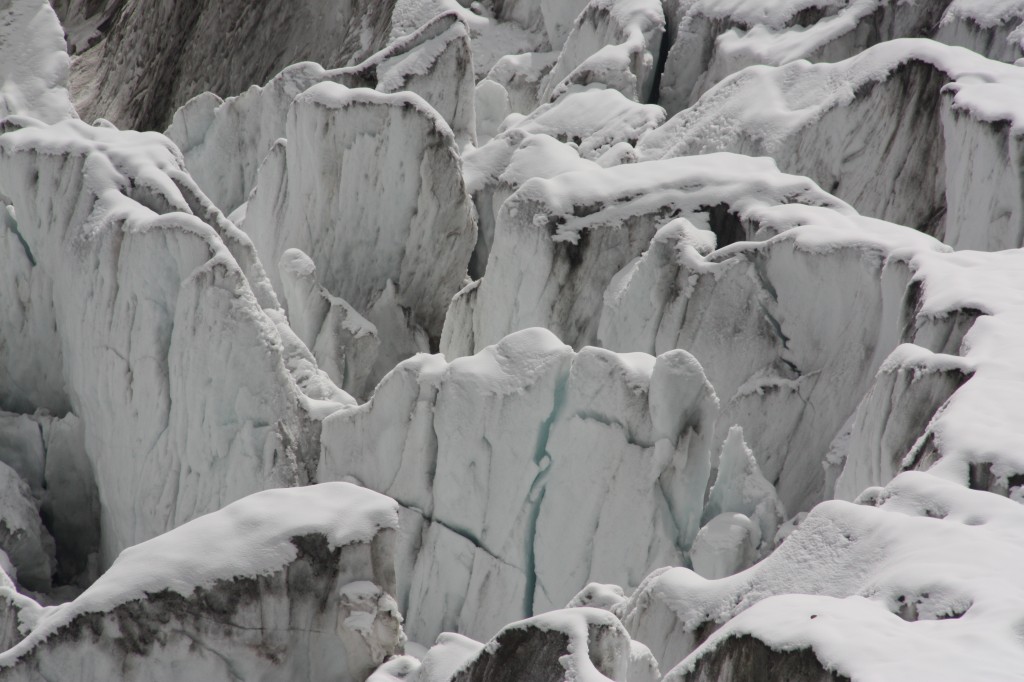
Glaciers – beautiful but highly endangered, like this one I visit regularly in the Swiss alps. (Pic. I.Quaile)
Glaciers are important to nearby communities as a source of water for drinking or irrigation. Some are especially important in dry seasons, heat waves and droughts. Melting glaciers provide an increase in water for a limited time. But ultimately, the lack of water could make traditional agriculture impossible in some regions of the Himalayas or the Andes.
So unless governments in Paris move fast to increase their commitments and bring the deadlines for emissions reductions forward, the windows to prevent some of these irreversible impacts on the polar and high mountain regions may close during the 2020-2030 commitment period.
It is not too late
However, the scientists stress that it is still possible to reduce emissions to the required level, if the political will becomes strong enough. Pam Pearson says the world has to get onto the path towards the two-degree goal now. Like many experts, she says this in itself is risky enough for the cryosphere, and a 1.5 degree pathway would be safer:
“So if countries indeed agree with UNFCCC chief Christiana Figueres’ proposal to meet every five years to strengthen INDCs, moving onto these lower-temperature pathways should be a concrete goal. Perhaps even more important, I understand the French COP presidency may be aiming at strengthening actions PRIOR to 2020, in the 2015-2020 period. This kind of earlier action is really vital, and will make the job of keeping temperatures as low as possible easier”
Without much more ambitious targets, the ICCI study concludes it will be “close to impossible” to avoid rapid deterioration of our snow and ice regions.
The challenge is to make the delegates in Paris understand that that does not just mean cosmetic changes to distant parts of the globe, but that it would also destabilize the global climate, displace millions of people and endanger food and water supplies in many parts of the world.
Melting glacier risk to seabed ecosystem
On my first visit to the Arctic in 2007, I went out into the Kongsfjord at Ny Alesund, Spitsbergen, with some marine biologists working out of Koldewey station, run jointly by France and Germany. It was June, and the glaciers at the end of the fjord were just starting to thaw. While I was enjoying the blues, whites and greys of the sea, ice and sky, the researchers in the small boat got very excited when they saw the water turned brown, where sediment was flowing into the fjord from the retreating glacier.
“Who turned off the light up there”?
They had been waiting impatiently for the thaw to set in, because their research focus was on what that means for the life forms on the seabed, or benthos. Clearly, if you live down on the sea floor, the intrusion of brown mud and other sediment changes your surroundings. Not least, it means less light coming down from above. Now while a certain amount of that is going to happen naturally every year with the changing seasons, the question is: what happens if there is a big increase in sediment coming in because of increasing melt through climate change?
I was interested to hear about a study published this week in Science Advances, dealing with that same question in the Antarctic. The findings indicate that melting coastal glaciers are having an impact on the entire ecosystem on the seafloor, leading to a loss of biodiversity through sedimentation. The scientists were looking at the West Antarctic peninsula, where the temperature has risen almost five times faster than the global average in the last fifty years.
Global warming changes seafloor communities
The study, published by experts from Argentina, Germany and Great Britain, including the Alfred Wegener Institute, Helmholtz Centre for Polar and Marine Research (AWI,) is based on repeated research dives. The scientists believe increased levels of suspended sediment in the water caused the dwindling biodiversity registered in the coastal region. They say it occurs when the effects of global warming lead glaciers near the coast to begin melting, discharging large quantities of sediment into the seawater.
To find out exactly how and to what extent the retreat of glaciers is affecting bottom-dwelling organisms, researchers at the Dallmann Laboratory are now mapping and analysing the benthos in Potter Cove, located on King George Island off the western Antarctic Peninsula. The lab is operated by the Alfred Wegener Institute and the Argentine Antarctic Institute (IAA) as part of the Argentinian Carlini Station. Researchers have been monitoring benthic flora and fauna there for more than two decades.
In 1998, 2004 and 2010, divers photographed the species communities at three different points and at different water depths: the first, near the glacier’s edge; the second, an area less directly influenced by the glacier; and the third, in the cove’s minimally affected outer edge. They also recorded the sedimentation rates, water temperatures and other oceanographic parameters at the respective stations, so that they could correlate the biological data with these values. Their findings: some species are extremely sensitive to higher sedimentation rates.
Short sea squirts adapt better
Sea squirts are small invertebrate creatures that live on the sea floor and feed by filtering the water through their anatomies.
“Particularly tall-growing ascidians like some previously dominant sea squirt species can’t adapt to the changed conditions and die out, while their shorter relatives can readily accommodate the cloudy water and sediment cover,” says Dr Doris Abele, an AWI biologist and co-author of the study. She is worried that “the loss of important species is changing the coastal ecosystems and their highly productive food webs, and we still can’t predict the long-term consequences.”
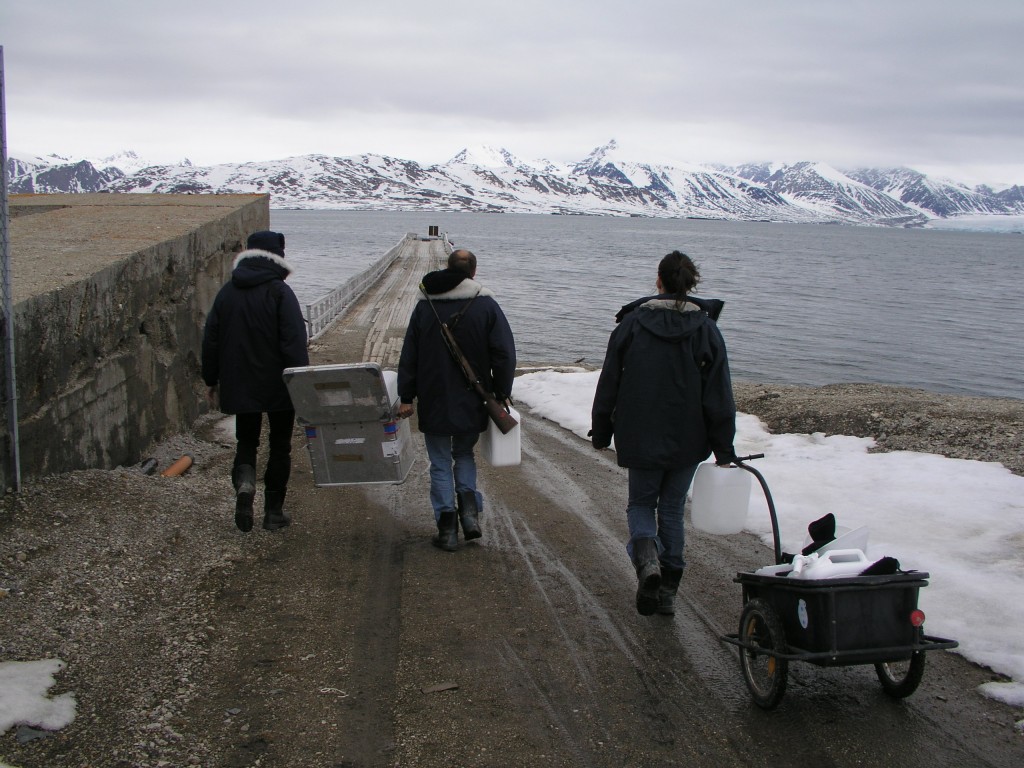
Can Arctic marine biologists work fast enough to keep up with climate change? (Ny Alesund, Pic: I.Quaile)
As with so many aspects of our oceans, there is a lack of base data on how sediment from melting glaciers affects the numerous life forms on the seabed.
“It was essential to have a basis of initial data, which we could use for comparison with the changes. In the Southern Ocean we began this work comparatively late,” says the study’s first author, marine ecologist Ricardo Sahade from the University of Cordoba and Argentina’s National Scientific and Technical Research Council CONICET, who is leading the benthic long-term series. “Combining this series of observations, accompanying ecological research on important Antarctic species, and mathematical modelling allows us to forecast the changes to the ecosystem in future scenarios,” says co-author Fernando Momo from Argentina’s National University of General Sarmiento.
With scientists telling us the ice of the West Antarctic peninsula has already passed a tipping point, the question is whether scientific monitoring and research will be able to keep pace with the rapid rate at which climate warming is already having major impacts on our oceans. For many species of our seabottom-dwelling creatures, the slow pace of greenhouse gas emissions reductions may well come far too late.
See also: Antarctic glaciers retreat unstoppable
Ice melt to motivate whizzkids?
And understanding that ice cores can tell us about 800,000 years of climate history tends to fascinate even the most unscientific of youngsters.
Not that the 160 young folk assembled recently in Bonn by the Hans-Riegel Foundation were lacking in scientific interest or talent.
The foundation, set up by the highly successful businessman who created HARIBO, (comes from HAnsRIegelBOnn, by the way) the “gummy bear” brand name, supports innovative educational projects with a view to encouraging talented young people to go into research. It awards prizes to school pupils in Germany and Austria for scientific projects.
Recently, 160 prizewinners were invited to a “Science Slam” in Bonn and a series of workshops and presentations – including a talk by renowned climate expert Mojib Latif. Mojib Latif is a professor for oceanology and climate dynamics at GEOMAR, the Helmholtz Centre for Ocean Research in Kiel, in northern Germany.
He has just been chosen as one of two winners of this year’s Deutscher Umweltpreis or German Environment Prize by the “Deutsche Bundesstiftung Umwelt”, one of Europe’s largest foundations. It’s the first time the award has been given to a climate scientist.
Latif, whose family background is Indian, is a well-known face on television. He has a talent for explaining complex climate phenomena in a way that ordinary people with no scientific background can grasp. As I listened to him addressing the young scientists, I could see how they were spellbound by his stories and anecdotes. And that makes it easier to digest the diagrams and figures that illustrate the workings of the global climate.
Latif holds his audience’s attention with a mixture of humour and examples from everyday life. He anticipates questions of the “skeptical” type, explaining the existence of natural trends and variations as well as human-made warming, and the wide range of scenarious covered by climate models.
When he turned to Greenland and to the Antarctic, I could see the fascination and curiosity in the eyes of the young audience.
The main message of this expert’s message was a mixture of concern at the rate of climate change and optimism that we have the technology to replace fossil fuels by renewables – and that the up-and-coming generation will use it to avert the worst.
Although he’s fairly certain we won’t be able to keep to the two-degree target, Latif says humankind just cannot be “so stupid” as to keep burning fossil fuels and heating up the atmosphere. If the applause of those representatives of the younger generation could be translated into positive action to combat climate change, his optimism may well be justified.
You can read what he told me in an interview after the encounter with Germany’s science whizzkids here:



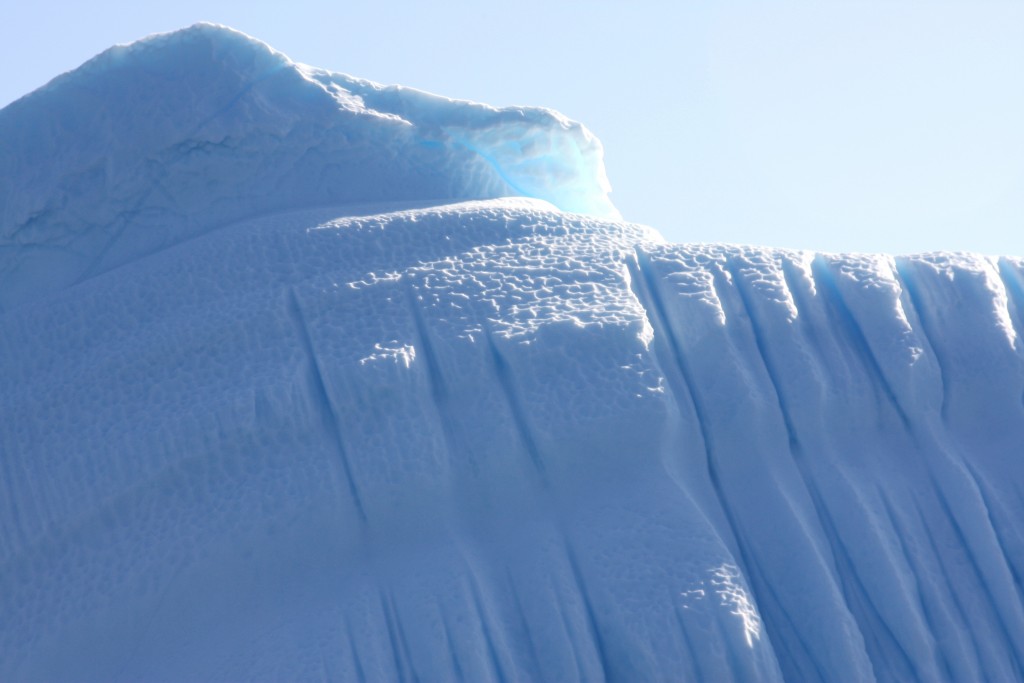

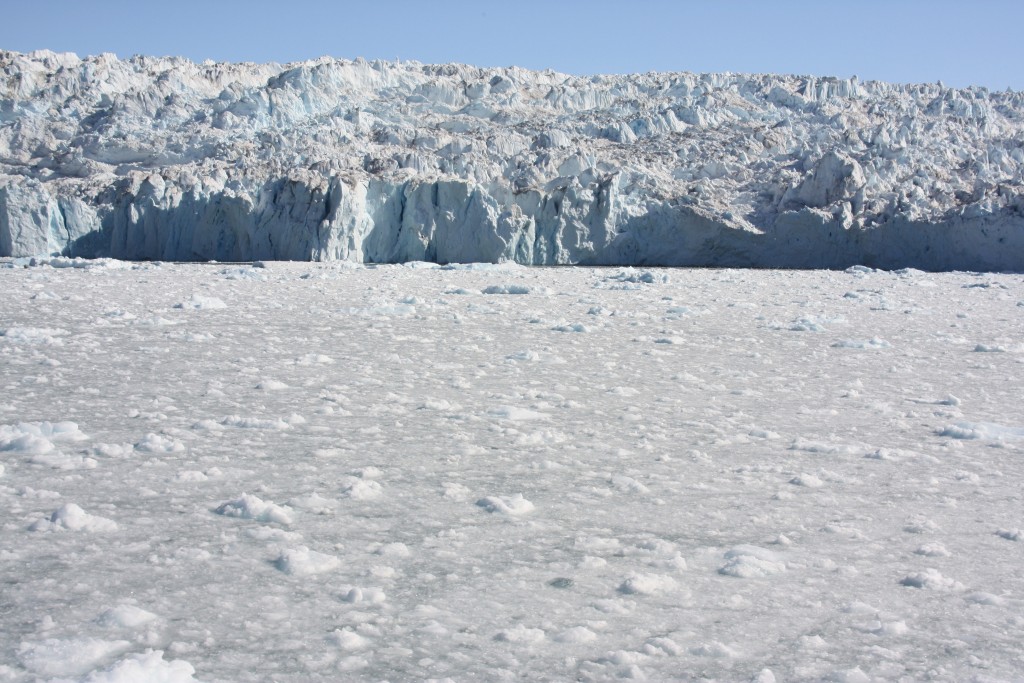




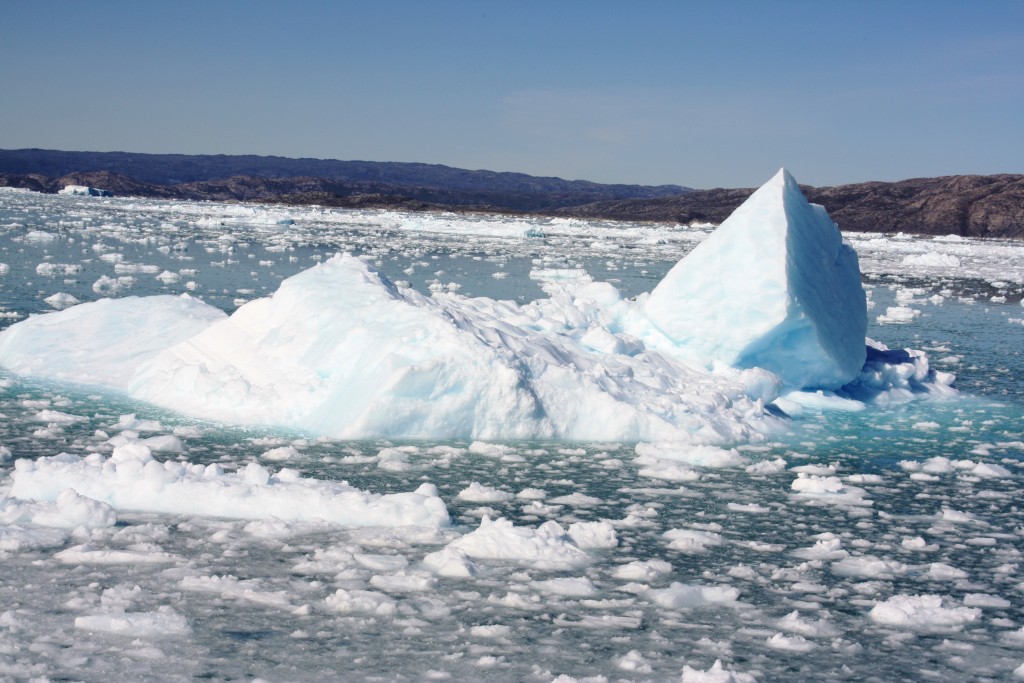
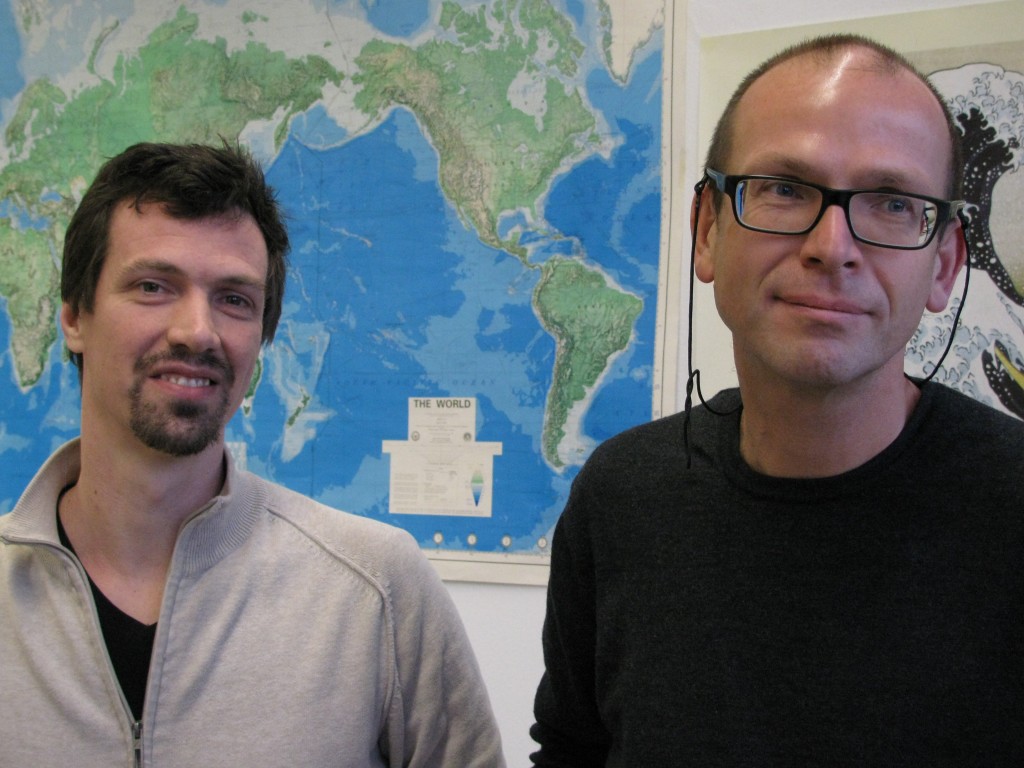
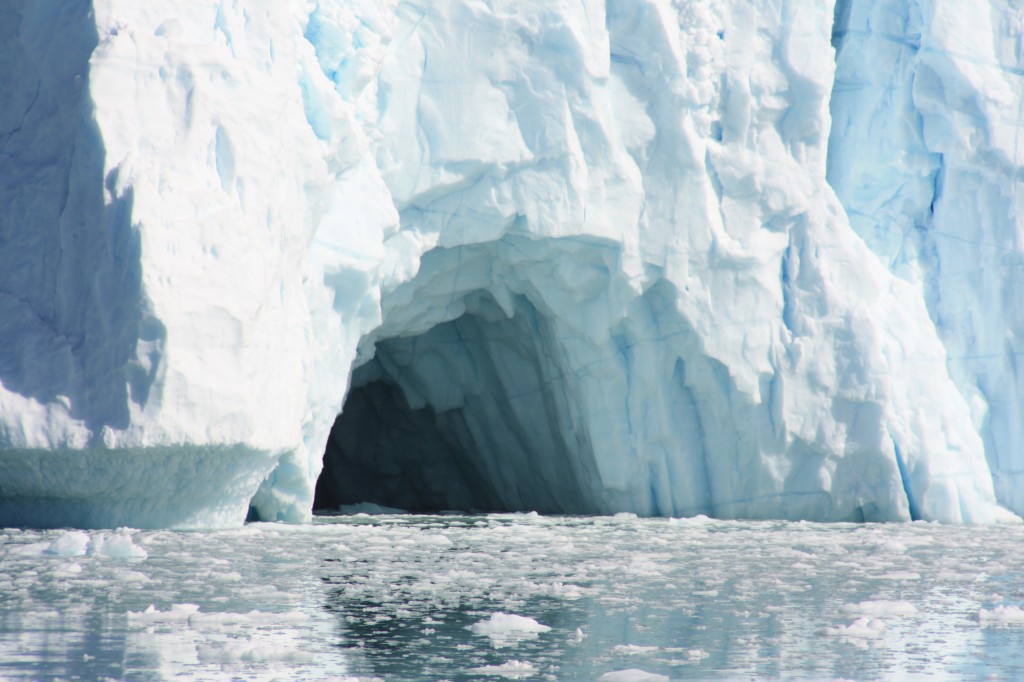

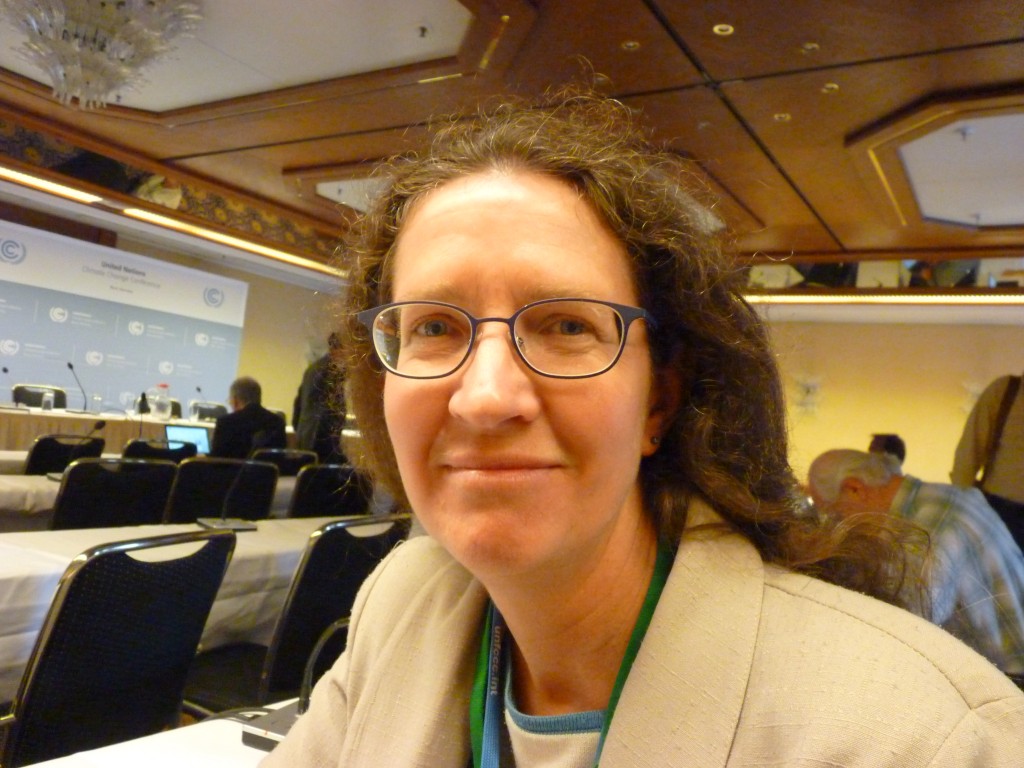
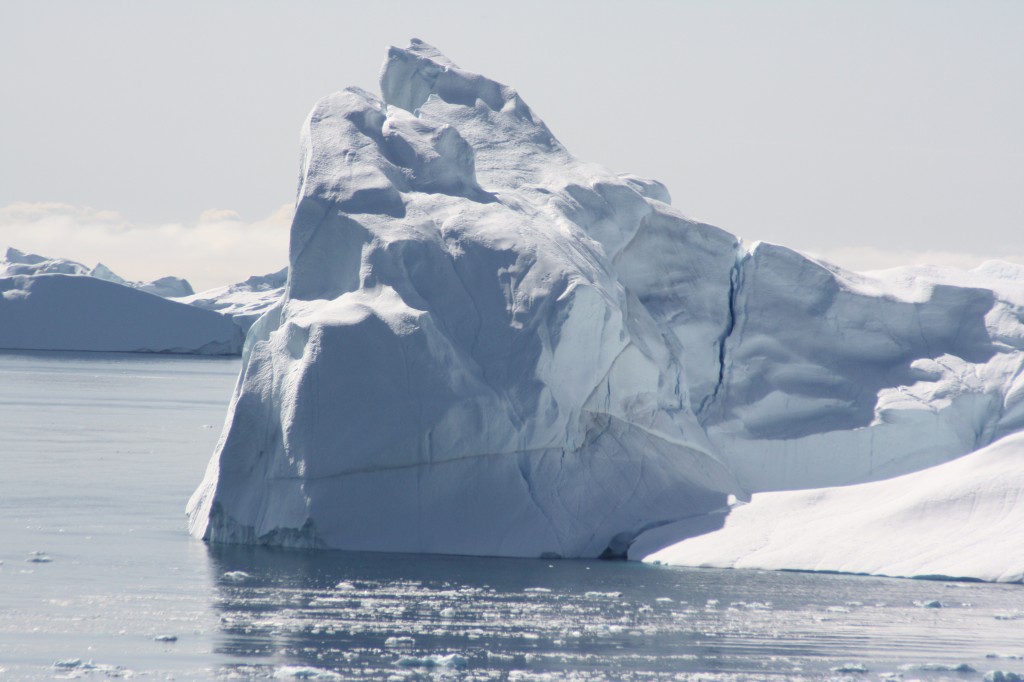
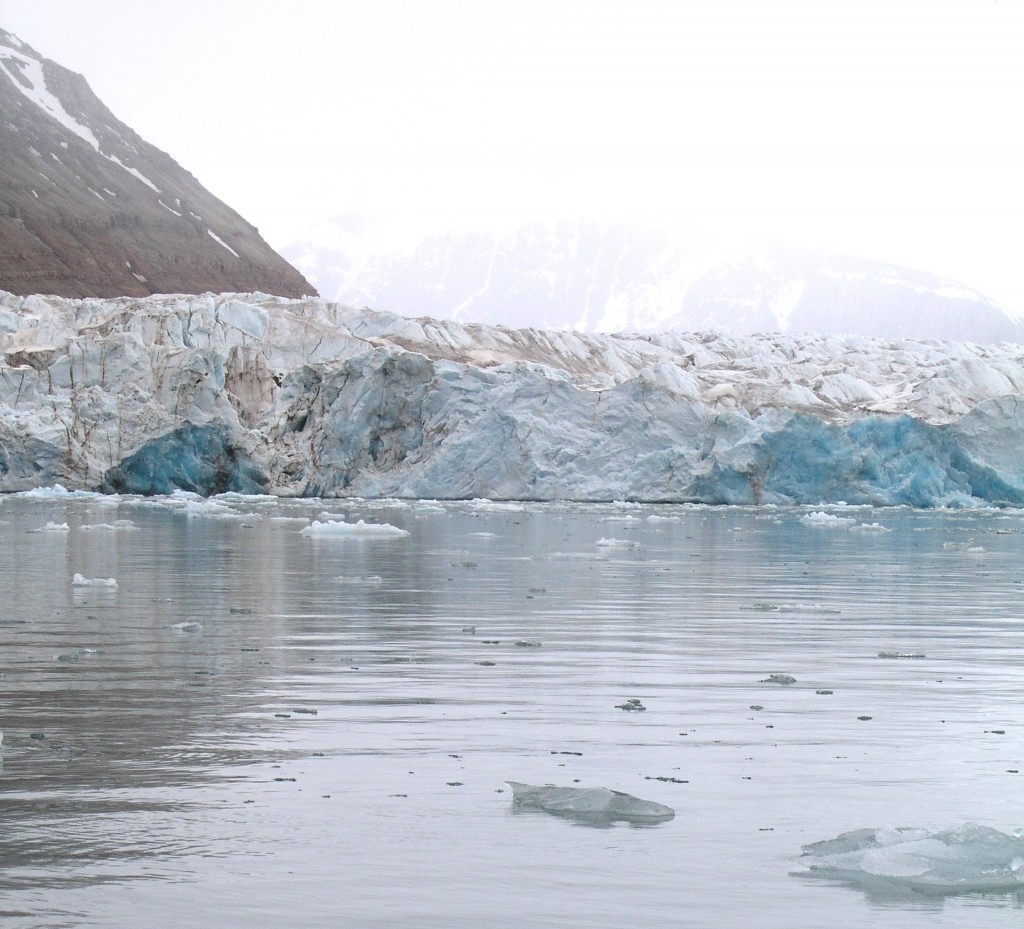
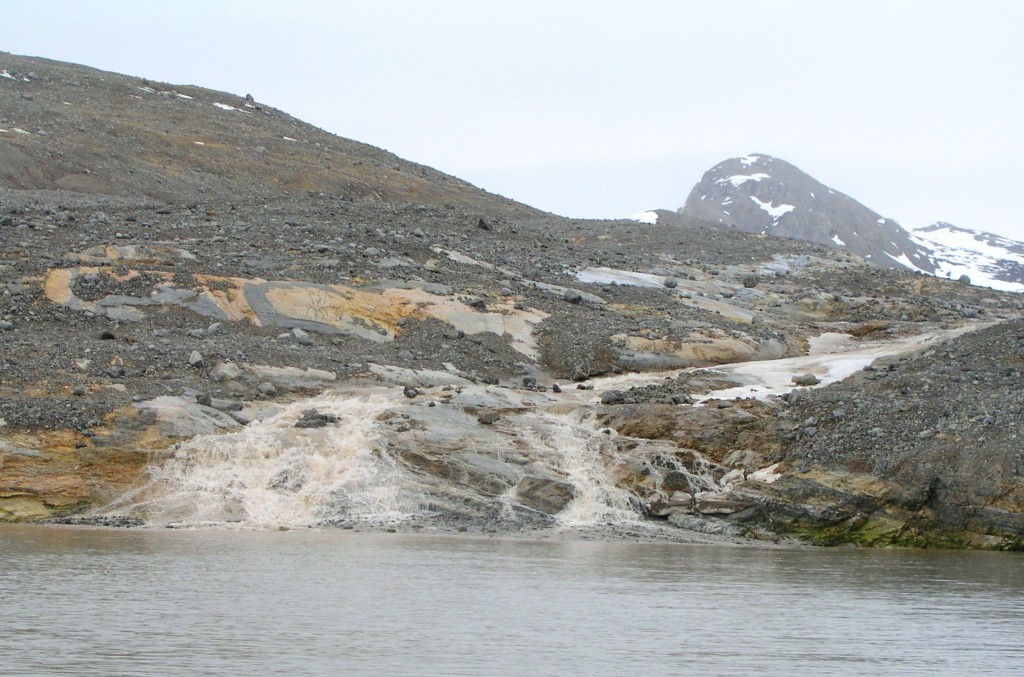
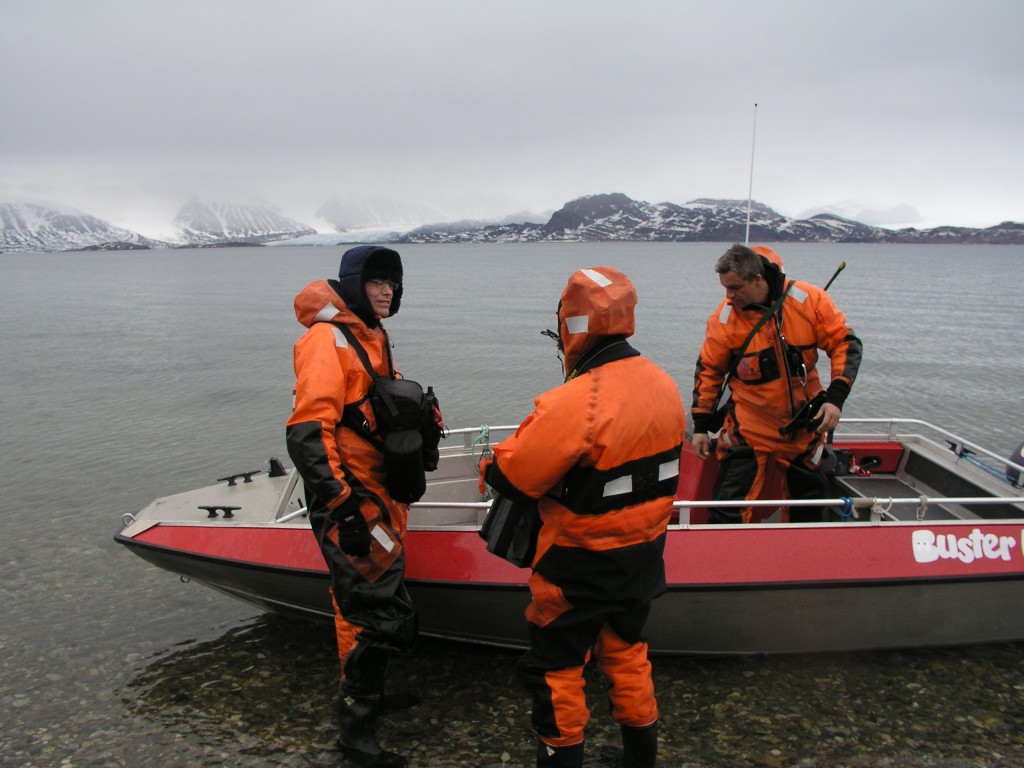
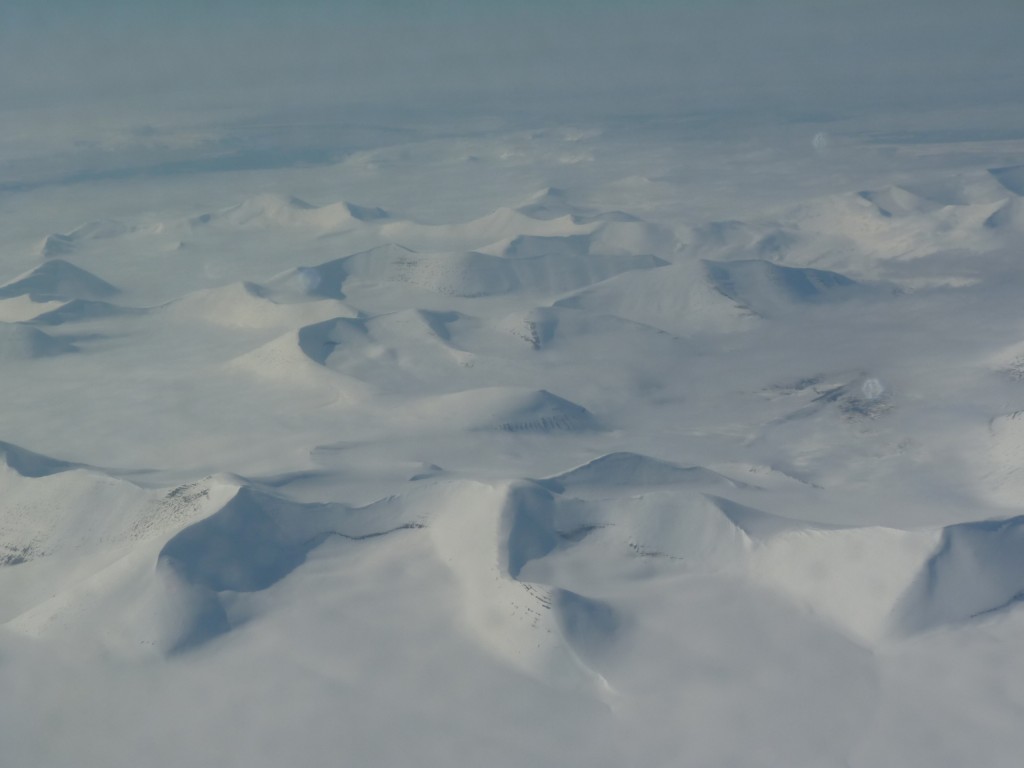
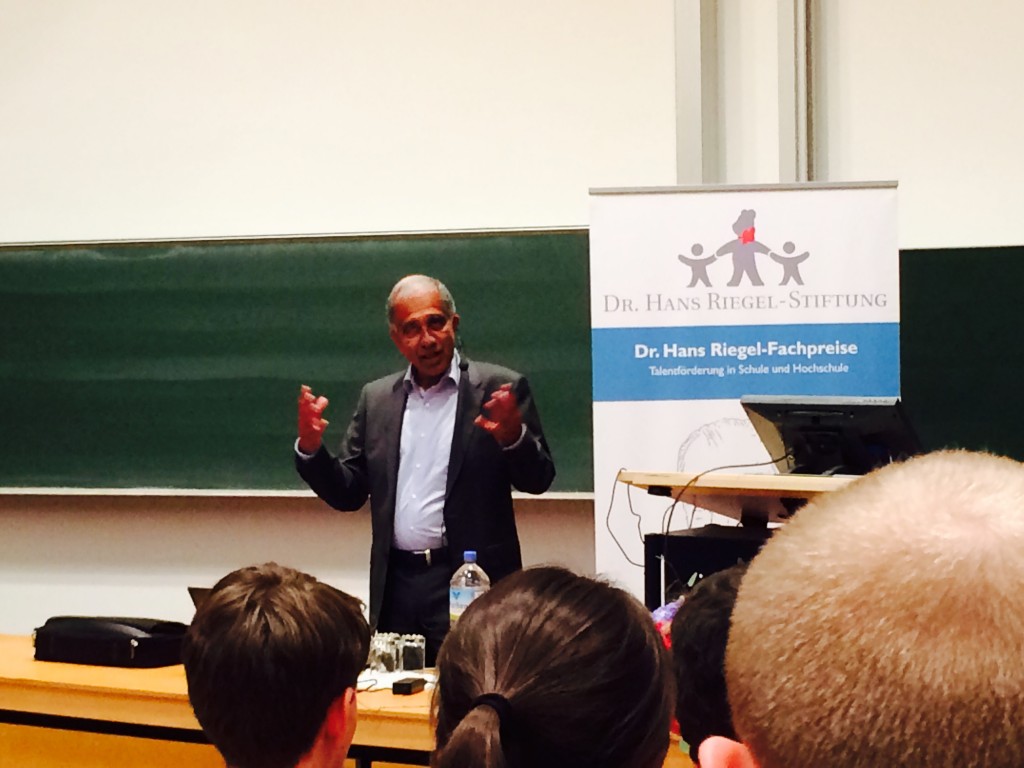
















Feedback